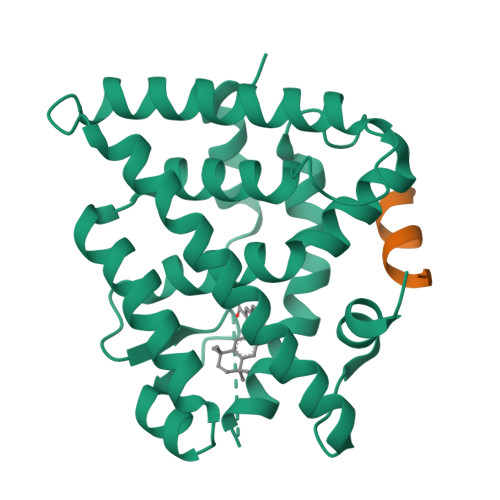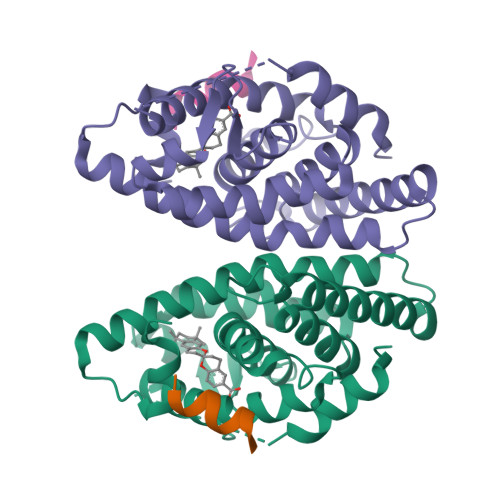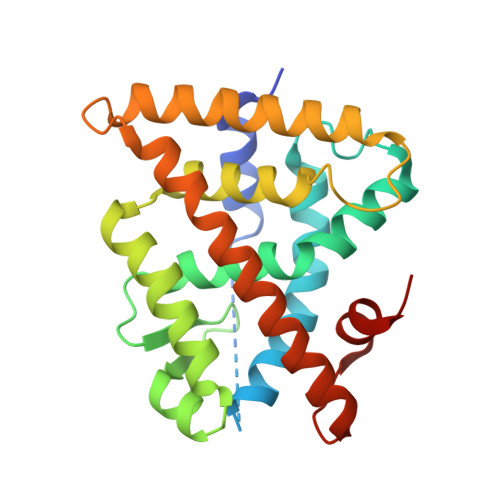Designed Spiroketal Protein Modulation.
Scheepstra, M., Andrei, S.A., Unver, M.Y., Hirsch, A.K.H., Leysen, S., Ottmann, C., Brunsveld, L., Milroy, L.G.(2017) Angew Chem Int Ed Engl 56: 5480-5484
- PubMed: 28407400
- DOI: https://doi.org/10.1002/anie.201612504
- Primary Citation of Related Structures:
5LYQ - PubMed Abstract:
Spiroketals are structural motifs found in many biologically active natural products, which has stimulated considerable efforts toward their synthesis and interest in their use as drug lead compounds. Despite this, the use of spiroketals, and especially bisbenzanulated spiroketals, in a structure-based drug discovery setting has not been convincingly demonstrated. Herein, we report the rational design of a bisbenzannulated spiroketal that potently binds to the retinoid X receptor (RXR) thereby inducing partial co-activator recruitment. We solved the crystal structure of the spiroketal-hRXRα-TIF2 ternary complex, and identified a canonical allosteric mechanism as a possible explanation for the partial agonist behavior of our spiroketal. Our co-crystal structure, the first of a designed spiroketal-protein complex, suggests that spiroketals can be designed to selectively target other nuclear receptor subtypes.
Organizational Affiliation:
Laboratory of Chemical Biology and Institute for Complex Molecular Systems (ICMS), Department of Biomedical Engineering, Technische Universiteit Eindhoven, Den Dolech 2, 5612 AZ, Eindhoven, The Netherlands.


















